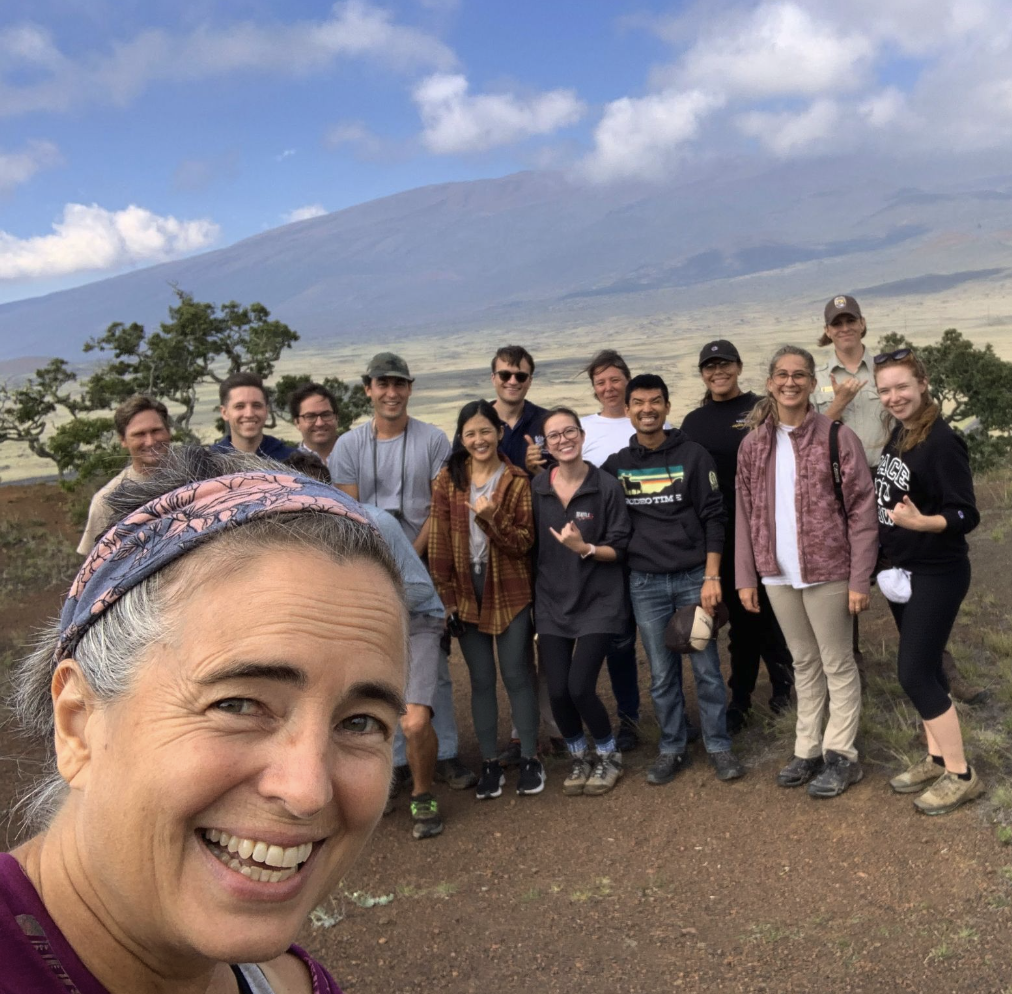
Hakalau Forest National Wildlife Refuge is located in the ahupuaʻa of Hilo on the windward slopes of Mauna Kea on the island of Hawaiʻi. The refuge was established in 1985 when the U.S. Fish and Wildlife Service (FWS) purchased two parcels of former ranchland under the authority of the Endangered Species Act. The designation of Hakalau was the first time that a refuge was established to preserve native forest birds and their habitat.
Hakalau includes land at elevations between 2,000 and 6,000 feet and is home to majestic koa and ʻōhiʻa trees. Unfortunately, some of the forest is dominated by invasive trees, alien grasses, and weeds that were once introduced as forage for cattle. Hakalau is currently closed to self-guided activities due to concerns about Rapid ʻŌhiʻa Death (ROD), which has killed thousands of mature ʻōhiʻa trees in forests and residential areas on Hawaiʻi Island.
Dean Antolini’s Environmental Law class had the great privilege of spending three days and two nights in Hakalau Forest National Wildlife Refuge in October of 2022. The field trip presented a rare opportunity for students to observe some of Hawaiʻi’s rarest endemic birds, plants, bees, and snails. Students were also invited to partake in on-the-ground restoration work. The Hakalau crew spent one morning in a small section of the Hakalau forest clearing alien grasses and weeds, planting about one hundred māmane trees, and installing shade structures for each of the māmane saplings. In between hikes, the Hakalau crew went birding with our FWS guide.
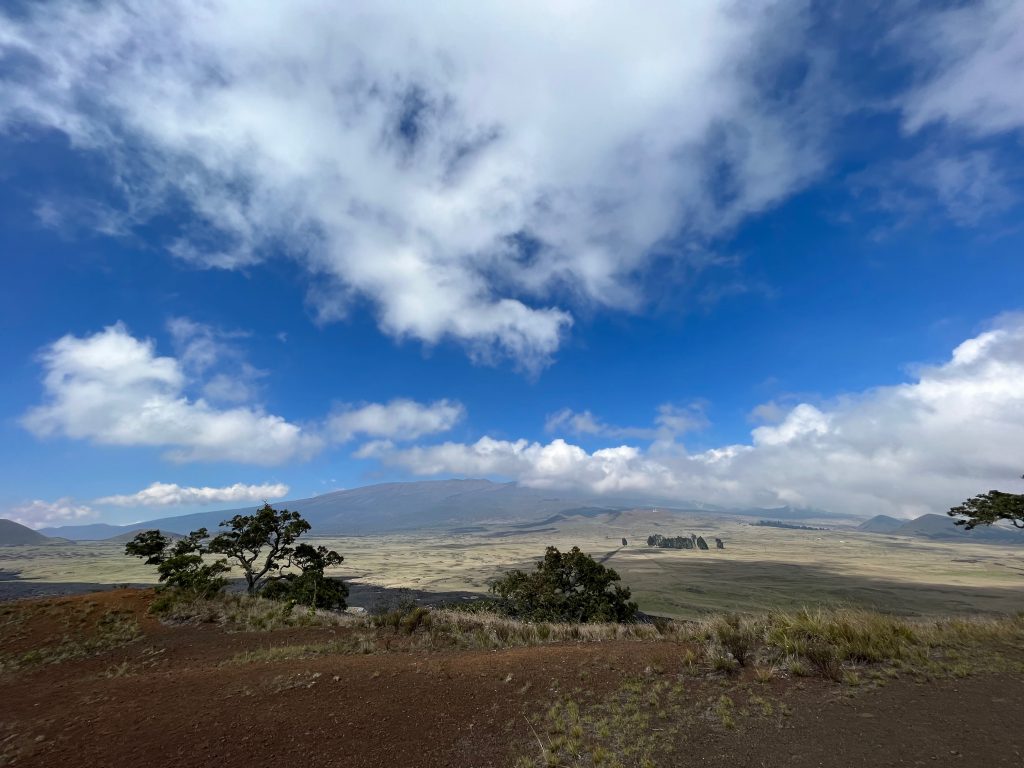
Kīpuka is an area of land that is surrounded by younger lava flows. Puʻu means “hill” and huluhulu means “hairy” – the area is lush and abundant with native trees and stands out amidst the surrounding barren landscape of pahoehoe (pah hoy hoy) and aʻa lava. Puʻu huluhulu inspires a sense of hope, resilience, and appreciation for all who have found refuge in believing in restorative justice for sacred spaces like Mauna Kea.

Students stand under towering, moss-lined koa trees and observed as ʻiʻiwi and ʻamakihi flew in short bursts in search of flowering ʻōhiʻa.
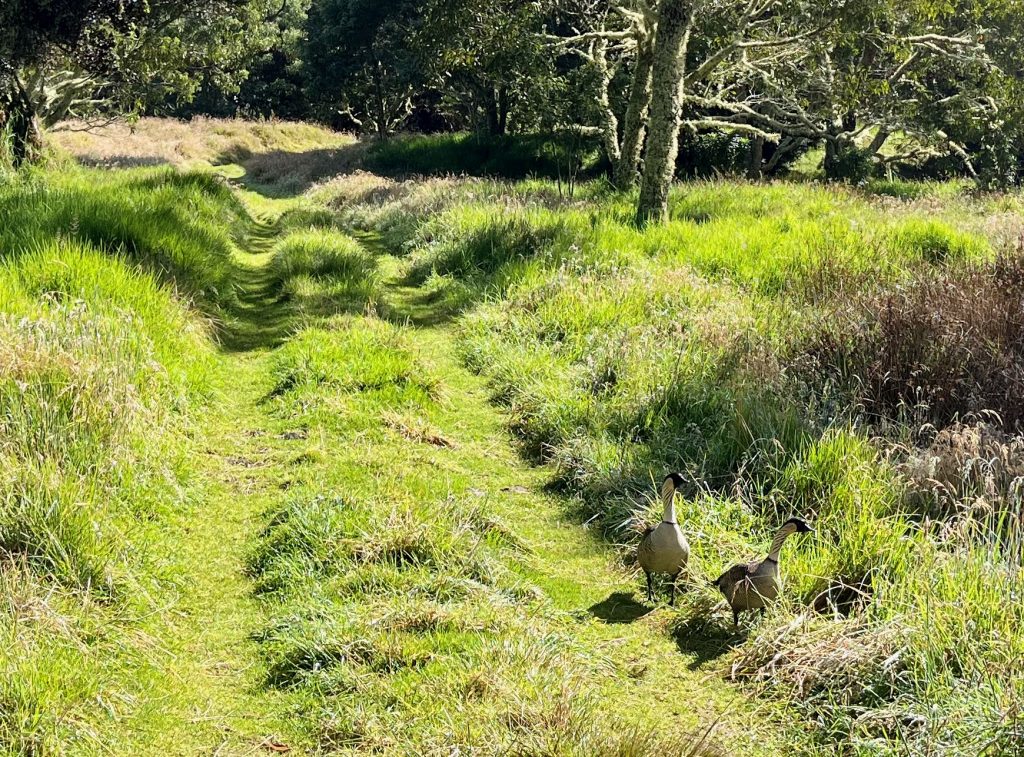
Nēnē are endemic to Hawaiʻi and almost always travel in pairs. More recently, however, FWS biologists in Hakalau have encountered more nēnē “throuples” traveling and co-parenting in groups of three.
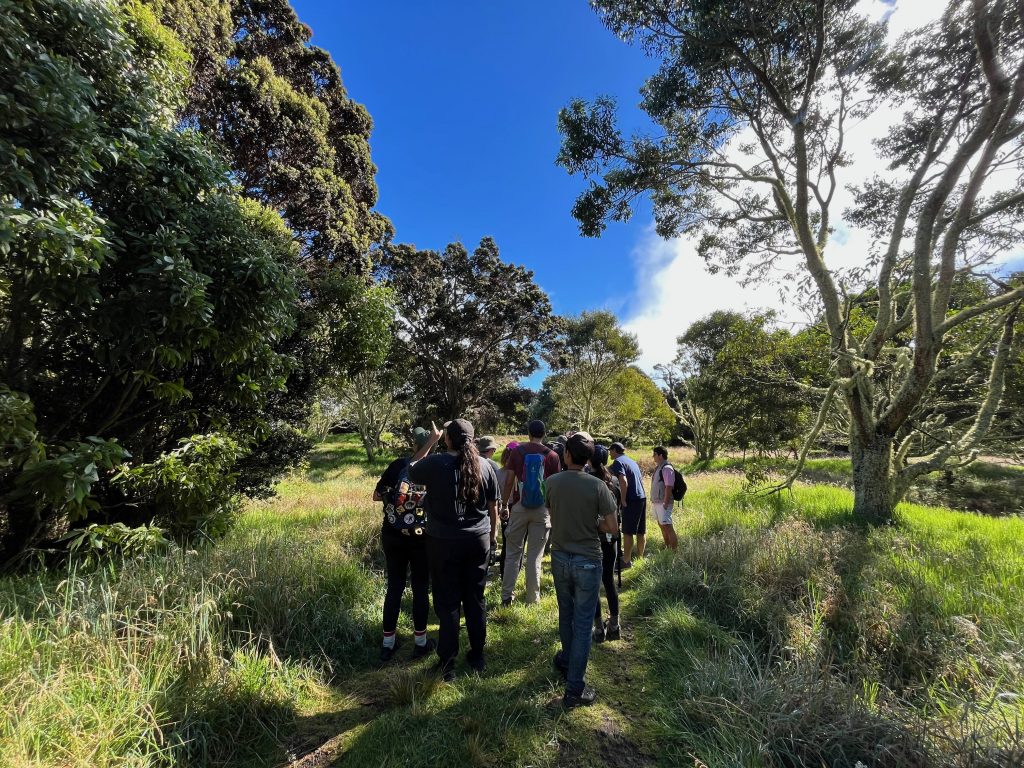
Students make their way across the native montane wet ʻōhiʻa forest in Hakalau.
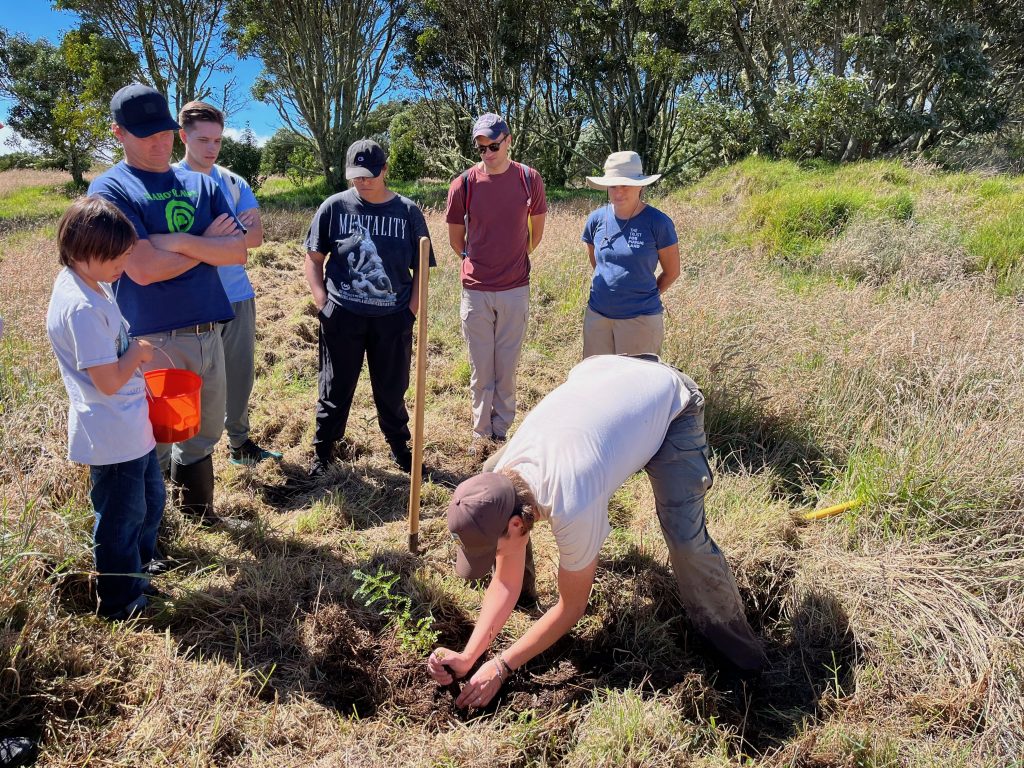
Students spend a morning planting approximately one hundred māmane trees in an effort to establish future habitat for the endangered, endemic ʻapapane.
